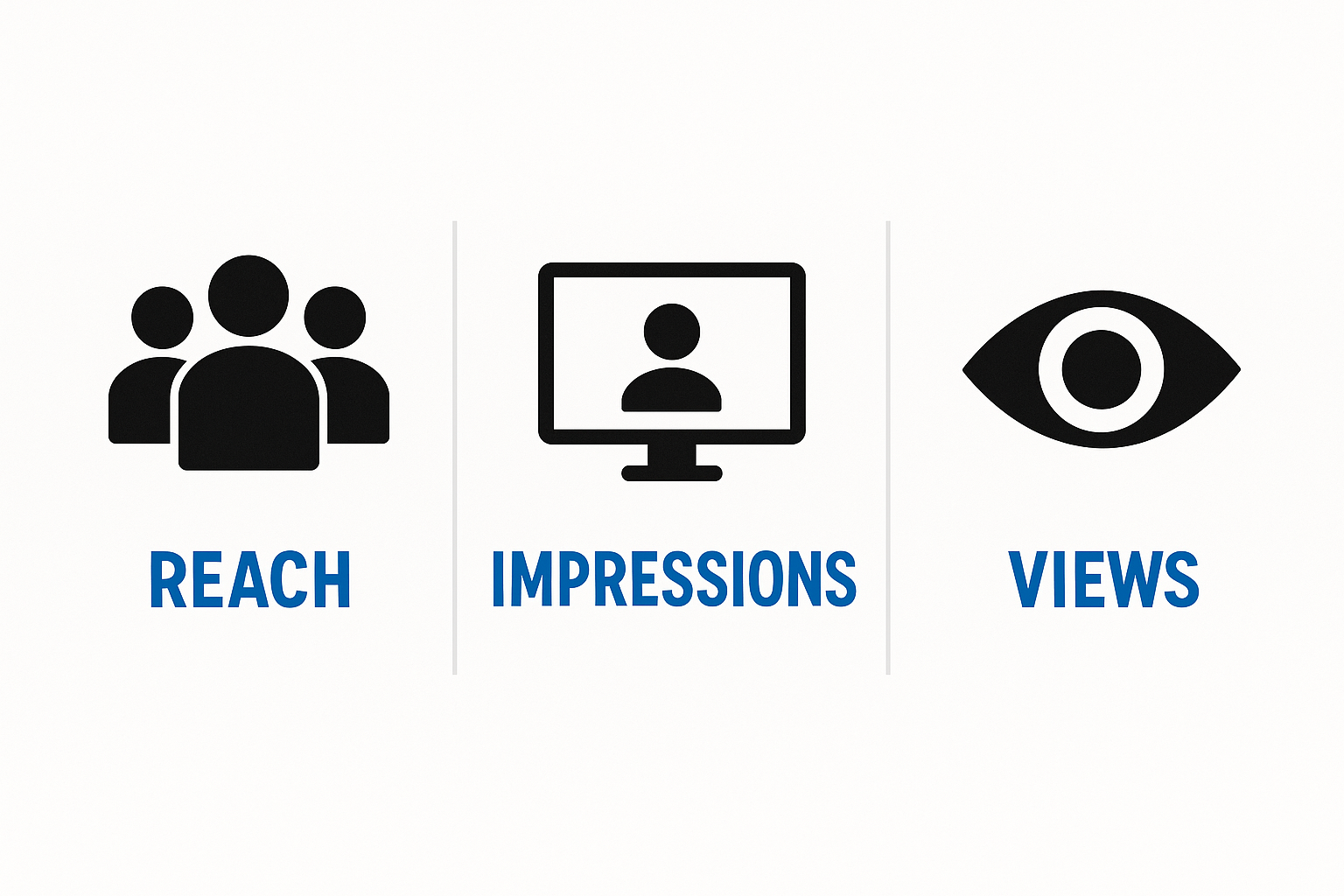
Metrics 101: Reach vs Views vs Impressions

Rohan Bhide
CEO
If you're a brand trying to measure campaign performance - or an influencer trying to prove your worth - you've probably come across the terms reach, views, and impressions. At first glance, they all sound like variations of the same thing: “how many people saw my post.” But in reality, each metric tells a different story. And if you don’t know the difference, you're flying blind.
Let’s clear it up.
Impressions: How many total times your content appeared on screen
Think of impressions as exposure events. If I see your post five times - once on my feed, once on Explore, and three more times on the reels tab - your post just clocked five impressions.
How long you spent looking at the post or even how long the post was the active post doesn't matter. An impression is counted if one pixel of the post showed up on your screen at any time - even if the full post wasn't visible.
This number always trends higher than reach, because one person can rack up multiple impressions. It’s great for measuring repetition and retargeting, but it doesn’t say anything about quality.
In fact, sky-high impressions with flat engagement can mean your post is being seen but ignored. Which is exactly the kind of thing Baton Analytics is built to flag.
Views: How many times your video was actively watched
Views are usually tied to video content—Reels, TikToks, YouTube Shorts, etc. and each platform defines a "view" slightly differently. On Instagram, for example, a view typically counts after someone watches 3 seconds of a video. On TikTok, it’s even more generous - views trigger almost instantly.
That means views are a better indicator of active interest than impressions but still not bulletproof. A “view” might mean someone caught the first three seconds while scrolling past. It doesn’t mean they finished the video - or even paid attention.
So, if you’re tracking performance for a storytelling-heavy or product-demo video, views are the starting point. But they’re not the finish line.
Views also suffer from same the repetition problem as impressions. One account can contribute multiple views by rewatching the same video multiple times - even if each individuals views aren't longer than a second.
Reach: How many unique people saw your content?
Reach is all about unique eyeballs. If 1,000 people saw your Reel, your reach is 1,000. Doesn’t matter if each person watched it once, twice, or ten times - it only counts once per person.
This is often the topline number for gauging how far your content traveled. It's particularly important for brand awareness plays. If you're trying to expose new people to your product, reach is the best proxy.
But Reach also suffers from the same shallowness problem - it only tracks how many unique people's screens your content showed up on. It doesn't track if they spent more than a couple of seconds or if they interacted with it.
By definition Reach <= Impressions/Views.
So which metric matters most?
That was a misleading title because these metrics aren't meant to be looked at by themselves. In other words, you can't judge whether a campaign was a success or not just by looking at a particular metric.
For example, take a brand awareness campaign. Of the three metrics, listed above Reach is clearly the best metric to track since you want to introduce your product or concept to as many people as possible. But Reach is shallow. On some platforms, a user is counted towards Reach even if a single pixel of the content has showed up on their screen or even if they scrolled past it. This doesn't achieve the desired "awareness" since there's a chance the user didn't even see the full content or acknowledge it. But Reach combined with Impressions/Views gives you a better picture. If your Reach is high and your view repeat ratio is also high it means you've reached your target audience size AND they were interested in the content.
That's why it's so important to look at metrics holistically and not focus on just one. True to that philosophy, at Baton we don’t believe in “one-size-fits-all” reporting. That’s why our analytics break down all three, side-by-side, so you can focus on the metrics that actually map to your goals.
Because let’s be honest: vanity metrics might win screenshots, but they don’t win business.
Got questions or want us to demystify another set of metrics?
Email us at [email protected] or drop a note - we’re building Baton Analytics to make this stuff less confusing for everyone.
